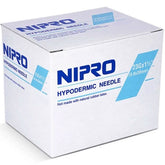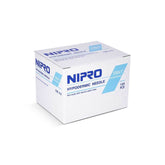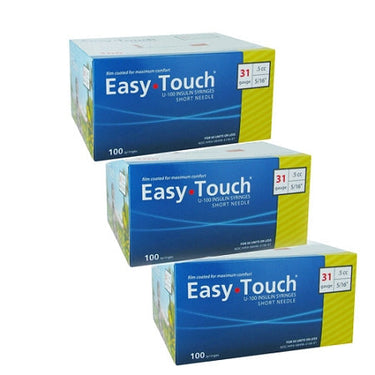Syringes are an integral part of modern medicine, used for a variety of purposes ranging from administering medications to drawing blood samples. Two types that are commonly used are insulin syringes and regular syringes, each designed for a specific set of applications.
Despite their similarities, insulin and regular syringes have key differences that make them uniquely suited to their specific tasks. These distinctions are important to understand, whether you're a healthcare professional, a patient who uses syringes at home, or simply someone interested in medical science.
What is a Syringe?
A syringe is a simple pump consisting of a plunger that fits tightly into a cylindrical tube. The plunger can be pulled and pushed along the inside of the tube, allowing the syringe to draw in or expel a liquid through an opening at the far end of the tube, onto which a needle can be fitted.
The invention of the syringe has revolutionized medicine, allowing for the precise administration of drugs, the collection of samples, and the performance of various medical procedures. Over time, many specialized types of syringes have been developed, each designed for a specific medical application.
What is a Regular Syringe?
A regular syringe, often referred to as a standard or hypodermic syringe, is a common type of syringe used in healthcare settings. Its components include the barrel, which holds the fluid, the plunger, which is used to expel or draw in the fluid, and the needle, which pierces the body's tissue.
Regular syringes come in various sizes, typically ranging from 1 milliliter (ml) to 60 ml. They are used for a wide variety of tasks, including administering injectable medications, drawing blood, and conducting certain medical procedures. The choice of syringe size and needle gauge (diameter) often depends on the specific application.
What is an Insulin Syringe?
An insulin syringe is a specialized syringe specifically designed for insulin administration in patients with diabetes. It typically consists of a short, thin needle attached to a small barrel that holds up to 1 ml of fluid. The barrel is usually marked with a scale indicating units of insulin, making it easier for patients to accurately measure their required dose.
The small size and thin needle of an insulin syringe make it ideal for subcutaneous injections, where the insulin needs to be delivered into the fatty tissue just beneath the skin. The needle gauge is typically smaller (higher number) than that of regular syringes, resulting in a thinner needle that minimizes patient discomfort.
Comparing Insulin and Regular Syringes
Insulin and regular syringes have several notable differences, reflecting their distinct uses.
Differences in size and measurement markings
Insulin syringes are generally smaller and designed to hold up to 1 ml of fluid, corresponding to 100 units of insulin. The barrel is marked with unit measurements rather than milliliters, facilitating accurate dosage. In contrast, regular syringes can vary significantly in size and are usually marked in milliliters.
- Differences in needle length and gauge - Insulin syringes typically have a shorter, thinner needle designed for subcutaneous injections. Regular syringes can come with a variety of needle lengths and gauges, depending on the intended use.
- Differences in specific uses - Regular syringes are used for a variety of purposes, including intravenous injections, intramuscular injections, and fluid withdrawal. Insulin syringes, however, are specifically designed for the subcutaneous administration of insulin.
- Differences in disposal methods
- Both types of syringes should be disposed of safely in a sharps container. However, insulin syringes, often used at home, may have different local disposal guidelines compared to regular syringes used in healthcare settings.
Misconceptions and Mistakes to Avoid
A common misconception is that all syringes are interchangeable. However, using the wrong type of syringe can lead to incorrect dosages, improper administration, and increased risk of complications. For example, using a regular syringe to administer insulin could lead to an inaccurate dosage due to the difference in measurement markings.
Another critical mistake is reusing or sharing syringes, which can lead to infection and disease transmission. Regardless of the type of syringe, it's crucial to use a new, sterile syringe for each injection and to dispose of used syringes properly.
Final Remarks
Understanding the differences between insulin and regular syringes is key to safe and effective medical care. These differences in size, needle gauge, measurement markings, and specific uses ensure that each syringe type is perfectly suited to its intended purpose.
By appreciating these distinctions and using each type of syringe correctly, we can ensure that medications are delivered accurately and safely, benefiting both healthcare providers and patients.






